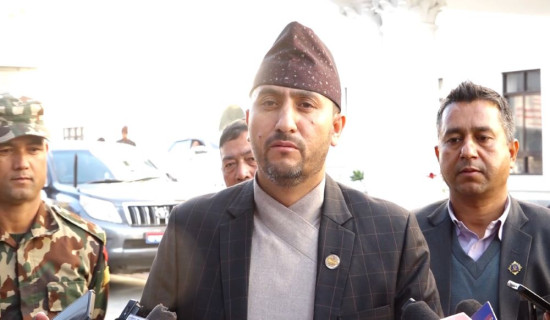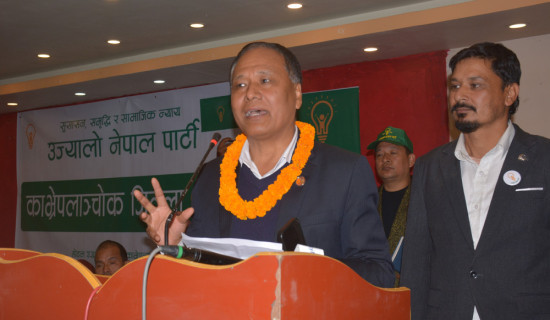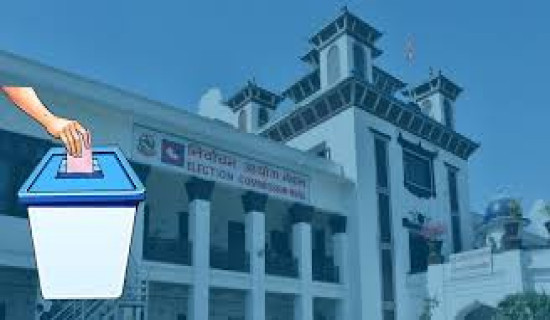- Tuesday, 16 December 2025
Challenges Of TB/HIV Co-infection
The co-infection of tuberculosis (TB) among people living with HIV (PLHIV) is one of the public health challenges. In Nepal, the HIV epidemic has changed from a low prevalence in the general population to a concentrated epidemic in most at-risk populations.
There is a low prevalence of HIV infection in the general population but a higher prevalence in specific most at-risk (key) populations such as people who inject drugs (PWID), men who have sex with men (MSM), transgender people (TG), male sex workers (MSW), female sex workers (FSW), male labour migrants (MLM), as well as their spouses and prison inmates in the country.
Epidemiology
Globally, about 1.5 million people died of TB in 2020. It has been estimated that TB is the 13th leading cause of death and the second major infectious killer after COVID-19 worldwide. An estimated 10 million people were infected with TB globally, out of which 5.6 million were men, 3.3 million women, and 1.1 million children (WHO, 2021).
At the same time, HIV continues to be a major global public health issue, having claimed 40.1 million up to now. In 2021, a total of 650, 000 people died from HIV-related causes and 1.5 million others acquired new HIV infections. There were an estimated 38.4 million people living with HIV at the end of 2021 worldwide (WHO, 2022).
Every day less than three people are infected with HIV in Nepal with male to female ratio of 1.17. In Nepal, AIDS-related death every year is less than 1000 (UNAIDS, Nepal 2020). The estimated number of PLHIV in Nepal is 30,300 with 0.13 per cent prevalence among the adult population.
The total reported cases of HIV in Nepal to date was estimated to be 40, 341. However, HIV incidence per 1000 is 0.03 per cent (NCASC, 2021). The total number of PLHIV receiving anti-retroviral therapy (ART) was 20,883 in 2021.
One of the leading causes of death among people living with HIV is TB. About 214 000 people with HIV died due to TB infection. HIV damages the immune system and makes people more vulnerable to contracting serious bacterial infections such as TB.
People who live in areas where TB is more common are at higher risk, however, all people with HIV are considered to be at a high risk of contracting TB. Regular testing of TB among PLHIV is, therefore, recommended. It is important to know that TB can be cured in people with HIV if it is diagnosed and treated early.
The prevalence of TB/HIV co-infection in Nepal is about 2.4 per cent (National Tuberculosis Control Centre, 2017). Therefore, as people living with HIV are more vulnerable to acquiring TB, HIV prevention, treatment, and care must be a priority concern for TB prevention and control programmes and vice versa.
There have been unprecedented efforts of antiretroviral treatment (ART) scale-up during the past two decades resulting in declining new infections and mortality globally. However, HIV-associated tuberculosis remains a major public health challenge.
In resource-limited countries, tuberculosis is the leading HIV-associated opportunistic infection in particular and the main cause of death globally.
TB and HIV are often considered dual epidemics. A significant number of people of the 10 million new cases of TB were among people living with HIV, and a large majority of them were in Africa where one in four HIV-related deaths is implicated as a result of TB complications.
HIV and TB can become lethal combinations, each disease can speed up the progress of other infections, and that may result in people with HIV dying from a TB infection within months if left untreated. In people living with HIV, TB can spread through the body more easily which is why TB/HIV is associated with extra-pulmonary TB. On the other hand, active TB accelerates the progress of AIDS infection in the body.
Collaboration
The presence of HIV infection makes diagnosis and treatment of TB more challenging. The sputum of an HIV-positive person usually contains a lower concentration of TB bacteria which makes it harder to detect TB in a sputum test. Among HIV-positive people, extra-pulmonary TB is found to be more common and detection of which through either sputum smear microscopy or chest x-rays becomes less feasible.
Moreover, TB medication among people taking antiretroviral therapy (ART) needs to be carefully monitored to avoid adverse drug interactions and side effects in co-infected patients.
Owing to the likelihood of extra-pulmonary TB, treatment may take longer in people living with HIV. Even after treatment, PLHIVs are more vulnerable to being re-infected with TB. People who have been treated for pulmonary TB remain infectious to others for a longer period even after initiating treatment.
Thus, any HIV treatment and care programme need to intensify case-finding and treatment for TB, and programmes to control TB infection in healthcare institutions where PLHIVs visit for ART.
Similarly, people who are diagnosed with or suspected to have a TB are recommended to undergo HIV counseling and testing. Health services for treatment and care of both diseases need to have collaboration and ideally based at the same location for the benefit of people having either infection or co-infections.
(Dr. Lohani is the clinical director at the Nepal Drug and Poison information Centre. lohanis@gmail.com)
















